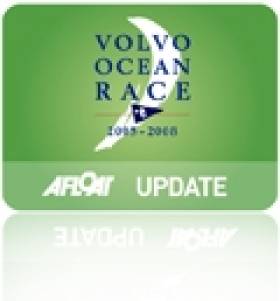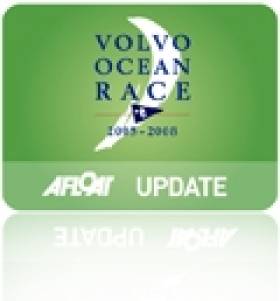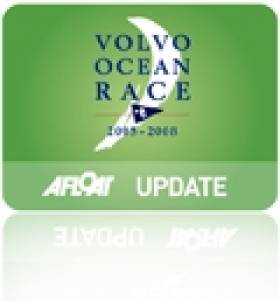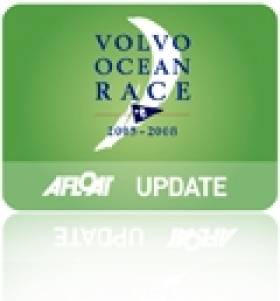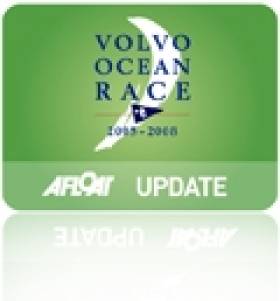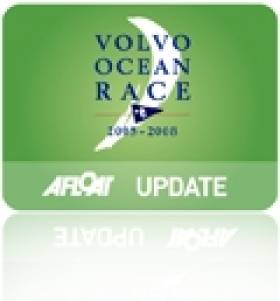Displaying items by tag: VOR 65
Persico Wins Contract To Build New Volvo Ocean Race 65s
#VOR - Italian boatyard Persico Marine has won the prestigious contract to construct new one-design Volvo Ocean 65s, depending on orders, for the next edition of the Volvo Ocean Race in 2017-18 .
The Bergamo-based company was part of the consortium that built the first seven Volvo Ocean 65 one-design boats that contested the 12th edition finishing in June this year.
Persico also made global media headlines when it carried out the complete rebuild of the shattered Team Vestas Wind boat in just four-and-a-half months after Chris Nicholson’s crew struck a reef in the Indian Ocean during Leg 2 in November last year.
Vestas Wind completed the final two legs of the ninth-month offshore marathon and proved how well the workers of Persico had done their job by immediately finishing runners-up in the eighth stage from Lisbon to Lorient, France.
All seven Volvo Ocean 65s will race again in the next edition from October 2017 after an upgrade and a major re-fit. More of the identical boats built by Persico will join them for the 13th edition depending on demand from future teams.
Tom Touber, COO of the Volvo Ocean Race, explained why the Race had decided to give this important contract to Persico.
“If you’re going to build a limited number of boats, it is way more efficient to construct them in one location,” he said. “The main component is the hull, which Persico provided very efficiently in the last race as part of the consortium of builders, so that’s one reason.
“But also Persico did an outstanding job taking the lead in the rebuild of Vestas Wind and it confirmed to us how well they could do the job they’re now taking on.”
Touber said that Persico and the Race would have the option of working with other suppliers, also within the former consortium, to assist as necessary.
Marcello Persico, managing director of Persico Marine, was delighted that the company’s relationship with the world’s leading offshore race was growing and being extended.
“When Vestas Wind left our yard to re-join the race in Lisbon, some of my team were almost in tears. It was an amazing challenge and we were so proud to complete it,” he said.
“As you can imagine, we’re very proud now to be given this opportunity to work so closely with the race again for the next edition. We feel we are part of the Volvo Ocean Race family.”
He added: “This news is also a real boost for the Italian marine industry. Many companies have struggled hard to survive during the economic crisis and it’s great that such faith has been shown in us from the very top end of the market.”
Touber and Persico underlined that they did not anticipate problems ensuring any new boats built matched the strict one-design specification of the existing seven.
“The moulds and jigs will be exactly the same as used in the production of the other Volvo Ocean 65 boats,” said Touber. “If any part is constructed differently, it will not fit.”
He added that a major re-fit for the entire fleet was organised by the race for the end of 2016, when all boats would be returned to The Boatyard of the Volvo Ocean Race, stripped down, all parts re-measured, and, as necessary, upgraded. This would also help ensure the strict one-design dimensions of the boats.
News of Persico’s deal is announced on the 42nd anniversary of the first running of the event, which began as the Whitbread Round the World Race in 1973.
Volvo Ocean Race One-Design Is 'A Tougher Beast All Round'
#VOR - Yachting World's Matt Sheahan has given a glowing review to the new one-design VOR 65 that will make up the fleet in the next Volvo Ocean Race.
"On the face of it the new Volvo Ocean 65 is another high performance, beamy, angular offshore racer," he writes for the official Volvo Ocean Race website.
"But there is a great deal more to her than just this, particularly behind the scenes and under her skin."
Sheahan - who recently gave the keynote speech at this year's ICRA Conference - notes the boat's improved safety features, including better shelter for crew.
That has the added effect of optimum shelter for interviews, which should make the 2014-15 edition of the round-the-world yacht race an even more direct experience for fans following their favourite boat's fortunes.
Meanwhile, Sheahan is particularly impressed with the carbon fibre hull, which achieves "a robust structure without piling on the pounds" and makes the VOR 65 "a tougher beast all round".
The VOR website has much more, including some stunning new photos of the vessel, right HERE.
Team SCA Talks New VOR One Design
#VOR - Last weekend we got a closer look at the Volvo Ocean Race's new one-design VOR 65 - and now the first team to sail the vessel a year ahead of the next race start have given it their seal of approval.
The VOR website reports comments from the all-women Team SCA's Annie Lush, Sam Davies and Liz Wardley, who gave their first impressions of sailing the brand new yacht late last month.
“It’s quite different from the Volvo Open 70 PUMA that we’ve been training on [before now]. I like it,” said Lush, who competed in the London Olympics last year in the new Elliott 6m class.
“For a one-design boat, it’s everything you could hope for," said Wardley, while Vendée Globe veteran Davies noted the "real challenge for everybody to learn how to sail this new boat, to really see what she can do and how she’s going to look after us."
Up Close With The Volvo Ocean Race's New One-Design
#VOR - The official Volvo Ocean Race website concludes its video series Building the Future with a detailed look at the first completed VOR 65 racing yacht.
The culmination of 12 months' hard work, with components manufactured in various locations across Europe and the United States - plus masts all the way from New Zealand - the first two finished boats were recently put together for their first tests in Southampton.
The video above sees Rick Deppe join Nick Bice to take in the biggest changes on deck for the crews that will race the new one-design fleet come October 2014.
And below you can see the all-women Team SCA take their delivered VOR 65 for a long-awaited test sail:
See The VOR 65's First Sailing
#VOR - After last week's long-awaited debut on the water of the new one-design VOR 65 that will make up the fleet in the next edition of the Volvo Ocean Race, Boatyard manager and Team Sanya veteran Nick Bice talks through the process behind getting the first completed vessel ready for delivery.
According to Bice, it's a near week-long process from getting the boat on its appendages to fitting the mast, prepping for launch, putting the structure to the test and finally sailing on the open water.
Now the boat is in the hands of the all-woman Team SCA who've been champing at the bit to put her through her paces with just a year to go before the first in-port race.
Volvo Ocean Race One-Design Finally Hits The Water
#VOR - The new one design VOR 65 that will race the next edition of the Volvo Ocean Race has taken to the water for the first time - and as the video clip above shows, she's a sight to behold.
The VOR 65 is the first one-design yacht to compete in the Volvo Ocean Race, formerly the Whitbread Round the World Race, which has a history going back 40 years.
And according to the VOR website, more than 120 people put in 36,000 man hours across two continents to bring Farr Yacht Design's vision into reality.
More lithe than the 70-footers that ploughed the seas in the last edition of the VOR - which concluded in exciting fashion in Galway last year - the VOR 65 is nevertheless built to last.
Indeed, it's expected that the same yachts racing out of Alicante in October 2014 will be competing in the 13th edition of the race in 2017-18 as well.
This past Monday the first completed yacht of the fleet, already painted in the livery of Team SCA, hit the water for its pull-down test ahead of its first sailing out of Southampton.
But the bigger test is when the all-woman Team SCA sail their state-of-the-art yacht from England to their home base in Lanzarote.
"It's a very proud moment," commented Green Marine project manager Connell Daino at the boat's first moments afloat. "This represents a lot of hard work by a lot of people but really it's just a beginning. We have a long way to go."
VOR 65 On The 'Leading Edge' Of Racing Yacht Design
#VOR - Seahorse Magazine takes an in-depth look at Farr Yacht Design's work on the appendages for the new one design VOR 65 that will compete in the next edition of the Volvo Ocean Race next year.
Farr designer Alon Finkelstein goes step-by-step through the different key elements that attach to the hull, from the keel to the bulb, daggerboard and rudder - the parts that can make or break a racing yacht.
"The design brief... required the appendage package to be significantly less costly than that of a Volvo Open 70, with equivalent or higher safety factors... and a similar performance envelope," he writes.
But boat designers constantly strive to achieve more for less, and as Finkelstein explains, the design of the VOR 65 is no different.
Seahorse Magazine has much more on the story HERE.
VOR Sail Wardrobe For New One Design Unveiled
#VOR - North Sails has revealed its sail wardrobe for the new one design VOR 65 with less than 18 months to go before the latest Volvo Ocean Race sets sail.
As The Daily Sail reports, the sails will be manufactured at North Sails' Nevada base using its 3Di process in a range of deniers, except for the A3 and storm jib.
Sails will be constructed in batches to ensure the same mould is used for eight sails of one type. The sails will then be finished at Vannes in France before being paired up with their respective vessels, assembly of which is racing ahead.
Perhaps most importantly, each team competing will have the use of just 12 sails - only eight of which will be allowed on board for each leg of the race. No recuts will be allowed except for repairs, in order to maintain the fairness of the one design principle.
“Our main objective is to make a really durable sail that holds its shape and stays together for as long as the race needs it to stay together," said North Sails general manager Jeff Neri.
The Daily Sail has more on the story HERE.
#VOR - The Volvo Ocean Race team caught up with Ireland's own Damian Foxall on board Sidney Gavignet's MOF 70 yacht Oman Sail with fellow VOR veteran Neal McDonald.
As reported in March on Afloat.ie, Ireland's top offshore sailor - and watch-leader for last year's VOR-winning team Groupama - is part of an international crew that attempted to break the Round Ireland speed record that was unfortunately abandoned due to the harsh wintry conditions.
But Foxall vowed that a repeat attempt is on the cards, and tells the VOR website that his experience on Oman Sail "is exactly what I wanted to do after the Volvo. I just wanted to sail with a smaller team of friends, racing with a good crew."
He added: "Sidney, Neal and I have been sailing and working a lot together. It’s a very natural thing and it’s a pleasure.”
Foxall also sings the praises of the MOD 70 one design, heralding the future of the Volvo Ocean Race and the new VOR 65 yacht.
"It’s light in terms of logistics and repairs. On the water too, I’m looking forward to enjoy the best of the One Design sailing – the battle on the water and not in the boatyard."
#VOR - In the latest video updates from the Volvo Ocean Race, we follow the first completed hull and deck of the new design VOR 65 on an epic journey across Europe for assembly in the UK.
Following the March report, it was a race against time to transport these key components from Persico in Italy, via Multiplast in France, to Green Marine in Southampton.
The schedule was tight enough as it was without a sudden blast of wintry weather across the continent to contend with.
See more of the VOR video series Building The Future below:


























